Children’s ‘polio-like’ illness may return in August. But a new treatment will cost millions to test. - The Philadelphia Inquirer
Children’s ‘polio-like’ illness may return in August. But a new treatment will cost millions to test. - The Philadelphia Inquirer |
- Children’s ‘polio-like’ illness may return in August. But a new treatment will cost millions to test. - The Philadelphia Inquirer
- Modern lessons from our polio past - Pursuit
- Is polio the answer to curing brain tumors? - WKYC.com
- There was an effective vaccine. An outbreak struck anyway. - The Washington Post
| Posted: 03 Jul 2020 11:13 AM PDT  For AFM, which strikes a small fraction of the number infected with COVID, $10 million to $15 million would be needed to test the antibody in human patients and scale up production for clinical use, said James E. Crowe Jr., director of the Vanderbilt Vaccine Center and senior author of the new study. That is a pittance compared with the spending on COVID, yet the funds remain elusive. |
| Modern lessons from our polio past - Pursuit Posted: 09 Jul 2020 10:42 PM PDT Share selection to: Scientists are still working to understand whether the blood plasma of people who have recovered from COVID-19, which potentially contains antibodies against the virus, could be used as a treatment for coronavirus patients. The jury is still firmly out when it comes to the research – one recent study from China was unclear about any benefit, and another from Johns Hopkins University in the US offered a hint of potential. 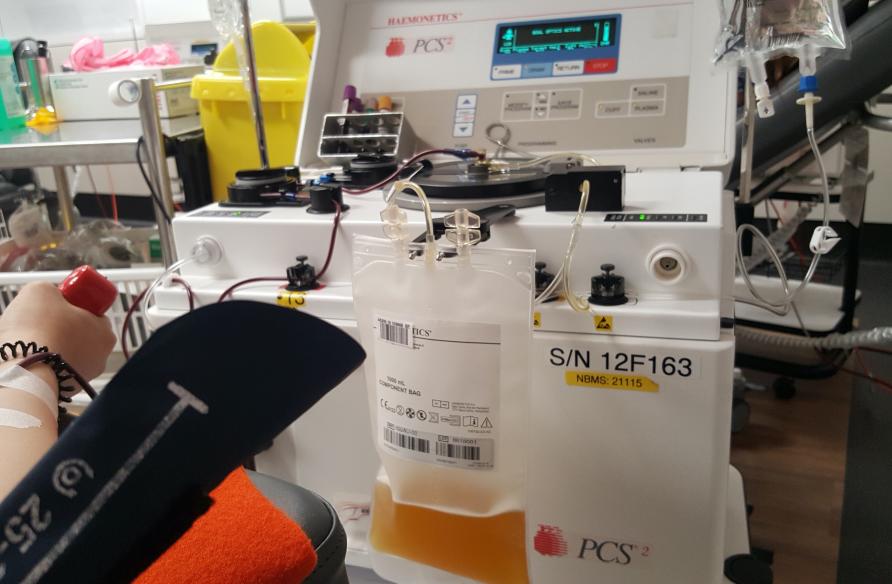 But, this isn't the first time that a treatment like this has been proposed for a disease for which there's no current treatment or prevention. HISTORY REPEATING A little over a century ago, in 1917, orthopaedic surgeon Dr Robert Lovett described what he was seeing: 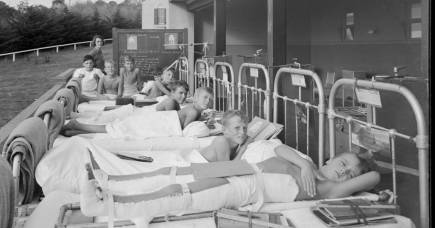 Remembering Australia's polio scourgeRead more "No recent event in medicine has caused more anxiety that the epidemic of poliomyelitis during the summer of 1916 … the history of the 1907 epidemic and similar records give reason to fear extensive recurrences of the disease. … a humanitarian and economic problem of no mean dimensions." This was the situation in the United States of America, where of the 27,000 cases of polio reported in that country, half were in New York – with a fatality rate of some 26 per cent. But many have since forgotten the virus that caused epidemics throughout the world for five decades before effective vaccines were developed. Poliomyelitis, or infantile paralysis as it was initially known, frightened communities and governments around the world. 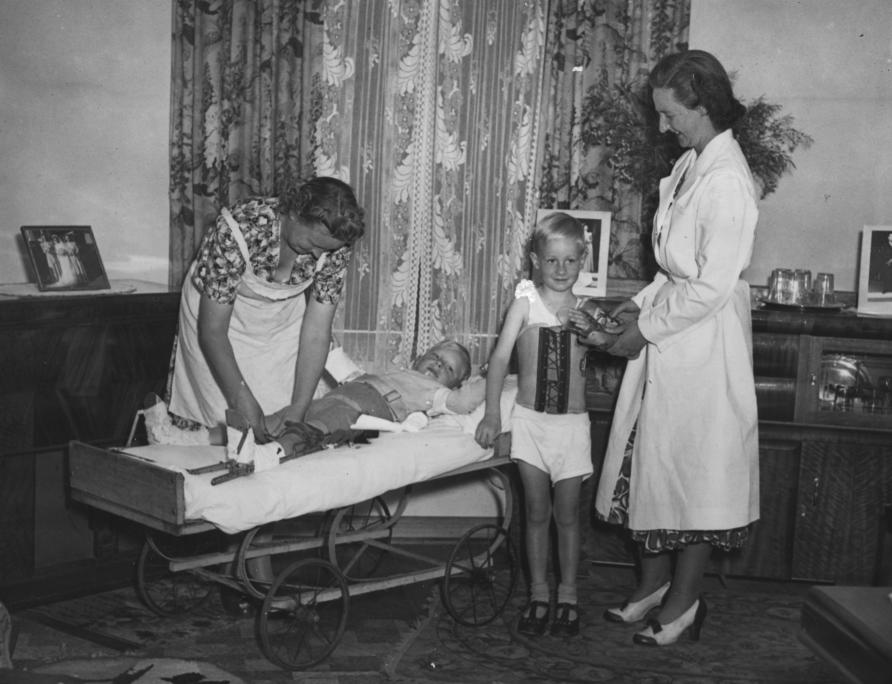 Schools, movie theatres, swimming pools and some interstate borders were closed. Families with affected members were ostracised and many despaired of ever finding a means of preventing the virus. Before a vaccine was developed in the mid 1950s and introduced into Australia in 1956, one of the treatments used injections of serum taken from the blood of people who had recovered from the acute phase of polio. The use of serum – which is plasma minus the clotting agents within blood – began to be used in the treatment of polio from the beginning of the twentieth century.  The science behind the search for a COVID-19 vaccineRead more The theory was that the serum of patients who had recovered from polio would contain antibodies which could potentially transfer to others in an attempt to prevent paralysis or lessen its severity. Although no randomised clinical trials were undertaken, enthusiastic medical practitioners and pressure from worried parents promoted the approach. THE AUSTRALIAN RESEARCH Dr Annie Jean Macnamara graduated in medicine at the University of Melbourne in 1922 and, in 1928, became the honorary medical officer to the physiotherapy department at the Children's Hospital in Melbourne. Here, she managed the clinical care of hundreds of people with polio in Victoria, Australia. 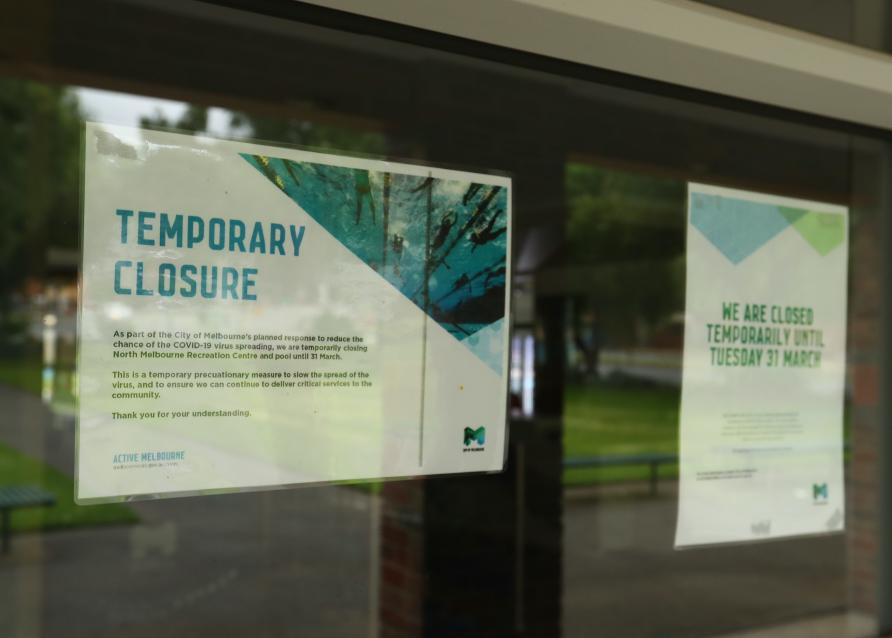 Dr Macnamara also played an important role as medical officer to the Poliomyelitis Committee of Victoria. As one of the strongest medical proponents of the use of serum in Australia she influenced its use. The Victorian polio epidemic in 1925 prompted Macnamara to test the introduction of immune serum in the treatment of pre-paralytic patients.  Public trust and controlling COVID-19Read more In most patients three or four days of a general illness including fever, vomiting, headache and constipation preceded paralysis. Often those who became paralysed experienced hand tremor, light sensitivity and urinary retention, but the most important symptom was severe pain when they bent their head forwards, flexing the spine. If these symptoms were present and a lumbar puncture confirmed a polio infection, Dr Macnamara would inject serum intravenously and monitor the patient over the next twelve to eighteen hours in which passive immunity would be established by a marked improvement in the patient's general condition and a rapid fall of temperature.  This serum was claimed to possess qualities that gave a patient protection against paralysis, and was promoted as an effective weapon against the effects of the poliovirus. It offered hope in a time of uncertainty. DISCOVERING THE STRAINS OF POLIO Although Dr Macnamara continued to advocate and provide treatment with serum until the 1940s, research during the severe 1931 epidemic in New York indicated that serum didn't prevent or appear to reduce paralysis.  Q&A: How could COVID-19 drugs work and what's out there?Read more Despite this, serum continued to be used for more than three decades in the United States of America and elsewhere because "the public had become so aware of the fact that there is a serum for the disease that it is difficult not to administer it". In 1928, Dr Macnamara began working at the Walter and Eliza Hall Institute, with her fellow medical graduate and later Nobel prize winner, Sir Frank Macfarlane Burnet. Scientific discoveries often build on the previous work done by other researchers, and it is common to share material, hypotheses, methodology and results. Dr Simon Flexner, a distinguished pathologist who served as the first director of the Rockefeller Institute for Medical Research, shared samples of the Rockefeller strain of poliovirus with Dr Macnamara and Professor Burnet in 1929. They discovered that the samples from the Rockefeller Institute were more virulent than the strain in Victoria, indicating that more than one type of polio virus existed. 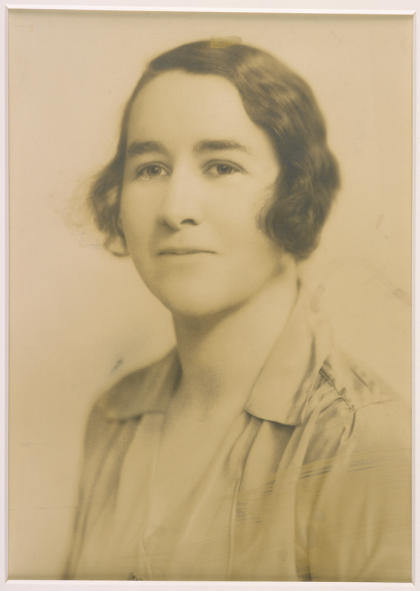 In 1931, Dr Macnamara and Professor Burnet published their discovery of the existence of more than one strain of polio virus, which flew in the face of the assumption that different strains were similar. Their report was treated with scepticism – "it came from unknown investigators on a remote continent" – but their work went onto make a significant contribution a quarter of a century later to the development of the Salk and Sabin vaccines that made the fear of polio a thing of the past. LESSONS FROM THE PAST Despite our modern advances in science and the technology, it's salutary to remember that more than sixty decades passed before effective polio vaccines became available. It's also worth remembering that the wild polio virus is still endemic in parts of the modern world. So, when it comes to the current COVID-19 pandemic, there will no doubt be false starts and raised hopes when it comes to treating the virus. Until we get a vaccine. And this time, researchers and scientists from this "remote continent" are being recognised for the research they are contributing to a global effort to discover one. Banner: A model of the polio virus/Getty Images |
| Is polio the answer to curing brain tumors? - WKYC.com Posted: 02 Jul 2020 06:31 PM PDT 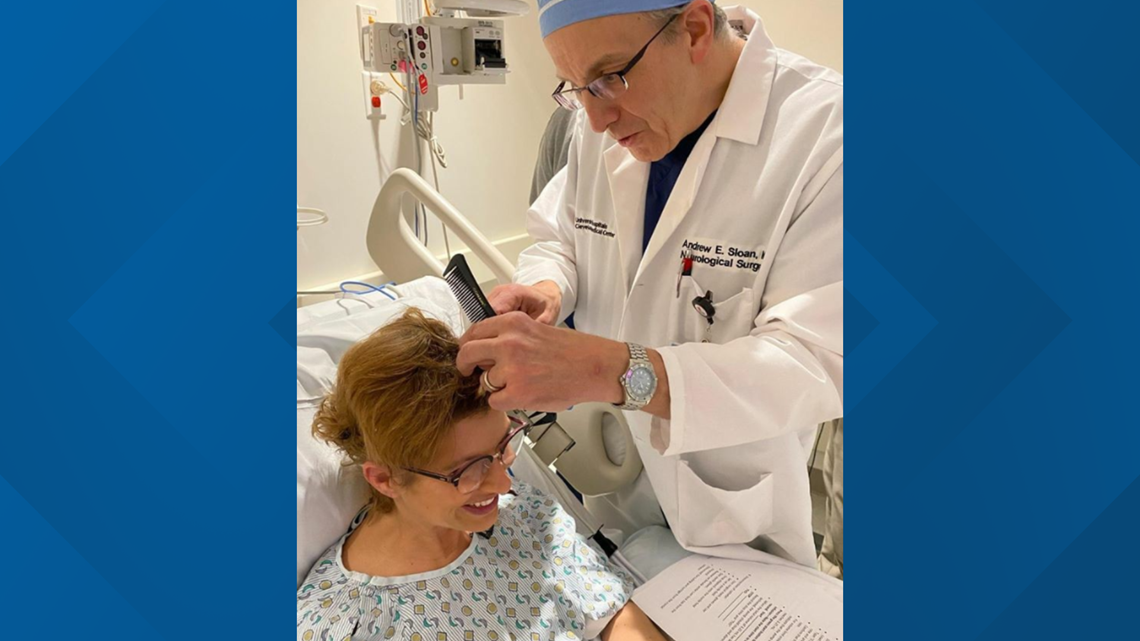 Results are promising, but more study and time is needed. CLEVELAND — Polio. It's a word that struck fear into the hearts of generations of people in the last century until a vaccine was developed that eradicated the disease from the United States for the last thirty years. According to the CDC, the most severe symptom of poliovirus is paralysis because it can lead to permanent disability and death. But a decade ago, researchers at Duke University took a harder look at the virus and thought there's a chance it may actually do some good. Perhaps it was the answer to treating one of the most devastating and deadly brain cancers on the planet, glioblastoma multiforme or GBM. Researchers at Duke first discovered that the poliovirus delivered directly into intracranial tumors was able to trigger a positive immune reaction, which led to a longer survival rate from the notoriously difficult-to-treat cancer. In Phase I of the clinical trial, doctors determined the correct dose of the virus to administer while mitigating side effects. The original study, which ran from 2012-2017, was published in New England Journal of Medicine in July 2018. The study found that survival rates were significantly higher in glioblastoma patients who received an intratumoral infusion of a modified version that combined the polio and rhinoviruses, (PVSRIPO immunotherapy) compared to patients receiving standard treatment at the same institution. But another study was needed and that's when University Hospitals in Cleveland got involved along with the Massachusetts General Hospital and UCSF. University Hospitals Seidman Cancer Center has treated eight patients in this phase two clinical trial to validate the groundbreaking effects of the poliovirus on glioblastoma (GBM), a deadly Grade IV cancer of the brain. Jessica Hill is the second patient in the trial. The 44-year-old mother of four and grandmother of two from Indiana was diagnosed in July 2019 of having a Glioblastoma Multiforme stage IV. It's the most malignant of brain tumors. On March 4th, a catheter was placed inside her tumor and Dr. Andrew Sloan infused it with poliovirus. Through this process, known as convection enhanced delivery (CED) and performed in the NeuroIntensive Care Unit at UH Cleveland Medical Center, the poliovirus attacks the tumor creating an anti-tumor immune response. "I've got a fight going on in my head right now so it's amazing, technology nowadays it is amazing," Jessica said. Andrew E. Sloan, MD, FAANS, FACS, is Director of the Brain Tumor and Neuro-Oncology Center and the Center of Excellence in Translational Neuro-Oncology at UH Seidman Cancer Center and the UH Neurological Institute, "This trial uses a polio virus modified to specifically target a receptor (CD155) found only on tumor cells," Dr. Sloan said. "While it only kills a small number of tumor cells directly, the virus and the immune response it exerts exposes these tumor cells, which have been hiding from the immune system and creates a significant anti-tumor immune response that takes over and kills the rest of the tumor that the virus has not destroyed. Unlike the native polio virus, the modified virus does not attack neurons." Traditionally, survival from a GBM is less than a year, and patients typically live less than six months after recurrence. The survival rate among those receiving PVSRIPO immunotherapy was 21 percent at 24 and 36 months, much higher than the 4 percent survival rate among historical controls treated at Duke, according to the article published in the New England Journal of Medicine on July 12, 2018. "The body has an amazing immunological memory," Dr. Sloan said. "If you've received the polio vaccine as a child, your immune system remembers that polio is a bad thing. The injection of the polio virus jump-starts the immune response, which in turn attacks the cancer." Dr. Sloan admits this is the best thing he's seen for these types of tumors and his eight patients are doing well. But it's still too early to tell what the long term effects will be since the trial started this past September. "Certain people have said, have used the C word, I'm not ready to use that word, I hope I can use it at some point but I'm a little bit hesitant because it's important, you know you don't want to get someone's hopes up unless you can follow through," Dr. Sloan says. Between April 2nd and June 25th, Jessica says her tumor decreased 7.4% and while she's hopeful, she's also more pragmatic. She was given 20 months to live when first diagnosed, so she's hoping to get past her original prognosis date of March 2021 and is grateful her involvement may one day help to save others. "I believe I've been on this journey to be able to help others spiritually and physically because it's just the way that God wants me to do this," she said. While this portion of the trial is closing soon, there is other research happening with glioma brain tumors. So if you or someone you know is dealing with this type of tumor, you may want to contact University Hospitals for more information. More from Monica Robins |
| There was an effective vaccine. An outbreak struck anyway. - The Washington Post Posted: 07 Jul 2020 04:00 AM PDT  But last year, it became clear that, even in a small nation like Samoa, eradicating a preventable disease like measles was not simple at all. In less than four months, thousands of infants grew sick from measles and more than 80 people died, many of them very young. The nation's health infrastructure was overwhelmed. "It happened so quick," said Fonoifafo Mcfarland-Seumanu, a public health nurse who joined the anti-measles campaign after winning the Miss Samoa pageant. An array of local factors led to Samoa's outbreak. It was not, however, unique. Around the world, people die every year from outbreaks that vaccines could have quashed, from polio in Pakistan to human papillomavirus infections in Japan. As the world grapples with the novel coronavirus pandemic and races to develop a vaccine to fight it, these outbreaks hold lessons for what lies head. Far from the end of the line, the discovery of a vaccine would mark the beginning of a new set of challenges in an era of fast-spreading misinformation and rampant public health policy missteps. "Vaccines don't save lives," said Walter Orenstein, an associate director of the Emory Vaccine Center. "Vaccinations save lives. A vaccine dose that remains in a vial is zero-percent effective."
An island outbreakMeasles spreads when an infected person coughs or sneezes. Among those confirmed to be infected, the death rate is 1.46 percent, deadlier than most estimates for covid-19, the disease caused by the coronavirus. Before a vaccine became widely available in the 1960s, it caused millions of deaths worldwide annually. Samoa has administered measles vaccines since 1982, according to national records, but it had not had an outbreak in years. "There was a false sense of security," said Sheldon Yett, the UNICEF representative for Pacific island countries. In July 2018, two infants died after receiving the vaccine. The Samoan government stopped its MMR program for nine months to investigate. A court later found the two nurses guilty of manslaughter — they had mixed a vaccine with muscle relaxant instead of water — and sentenced them to five years in prison. "Everyone lost confidence," Mcfarland-Seumanu said. "Even some of the health-care professionals had doubts." Anti-vaccination activists stoked a backlash, including Edwin Tamasese, the owner of a coconut oil processing facility with no formal medical training, as well as Taylor Winterstein, the wife of an Australian rugby player. Robert F. Kennedy Jr., the nephew of President John F. Kennedy and a controversial anti-vaccination activist, visited the islands in June 2019; he was photographed with Winterstein. Vaccination rates, already lower than the roughly 95 percent required for herd immunity, plummeted to 31 percent. Experts cited a variety of reasons, including poor medical literacy and government inaction. Then the outbreak began. Samoa confirmed its first case of measles in September, probably imported from New Zealand. Within weeks, the outbreak was out of control. On Nov. 15, the government declared a state of emergency. Hospitals were as much as 300 percent past capacity. The mother of the first child to die, 14-month-old Peter Von Heiderbrandt, begged families to get vaccinated. "These are our babies dying," she told a reporter. But the practical realities were immense. "Most Samoans use traditional as well as scientific medicine and because of the confused response by the government to the measles epidemic, many were going to and fro in both systems," said Penelope Schoeffel, a sociologist at the National University of Samoa. The government shut down the entire country on Dec. 5 and 6 for a sweeping door-to-door vaccination campaign. Unvaccinated families were asked to hang red flags outside their homes. Judith Esmay Ah Leong, a general practitioner in Apia, Samoa's capital, said doctors were shocked to discover "there were still people living off the grid and had no access to transport." Tamasese was arrested on Dec. 5 after allegedly breaking a new law about spreading anti-vaccination views. Mcfarland-Seumanu said that even as the deaths racked up, she spoke to parents who were scared of vaccines, citing rumors they read on Facebook. Only after 95 percent of eligible people were vaccinated on Dec. 29 did the government lift the state of emergency. "There wasn't a village that was not affected, one way or another, by the outbreak," Yett said.
Beyond SamoaAs a small island nation, Samoa may seem a unique case. But most countries have anti-vaccine activists, including the United States. Such views tend can take deep root in societies where distrust of authority is widespread. A polio vaccine was first discovered 70 years ago. It has largely been successful: Cases worldwide have decreased by over 99 percent since 1988. Yet wild transmission still occurs in Pakistan, Afghanistan and Nigeria. And last year, the number of cases in Pakistan surged to 147 — a five-year high that alarmed experts. Experts say that the central problems in Pakistan are distrust and mismanagement. Among the Pashtun ethnic community, anti-vaccine sentiment was especially rife after the CIA used a door-to-door vaccination effort a decade ago to hunt for al-Qaeda leader Osama bin Laden. When rumors of vaccinated children falling sick in a village school spread last spring, it prompted a wave of violence against medical workers and their guards. Vaccination rates plummeted. But vaccine hesitancy is not just the province of conspiracy theorists. Vaccines can be inconvenient. The oral vaccine that is prevalent in Pakistan (partly because it costs less) must be administered multiple times. Teams go door-to-door, leaving people jaded and skeptical of a formulation that involves a live virus. "As a parent you're sick and tired of it, as a vaccinator you are sick and tired of it," said Babar bin Atta, the country's top anti-polio official until last year. The Independent Monitoring Board of the Global Polio Eradication Initiative also blames senior Pakistani officials, arguing in 2018 that there had been "divisive and dysfunctional working relationships" within Pakistan's anti-polio and U.N. teams. Dysfunction and division are not limited to developing nations. There is an effective vaccine for human papillomavirus (HPV), but the Japanese government avoided promoting its use for years, putting the lives of thousands of women at risk. HPV, which is passed on through sexual contact, is remarkably widespread. Some strains of HPV can eventually lead to cervical cancer — it caused an estimated 266,000 deaths globally in 2012. Japan's multidose HPV vaccination rate was once around 70 percent. But just a few months after it was added to the country's official vaccination program in 2013, media reports alleged shocking side effects, and the government pulled its backing. The evidence of adverse side effects is slim. Doctors cautioned that only a tiny fraction of recipients reported symptoms. But the government withdrew proactive recommendations for it, in part because of fear of legal repercussions, and the vaccination rate dropped below 1 percent. Following a lengthy political battle, a new HPV vaccine is expected to be approved by the government soon and a vaccination push may follow. But the cost of the multiyear pause is high: A study published by the Lancet this year estimated that the crisis could result in up to 5,700 deaths unless coverage increases.
What does this mean for a potential coronavirus vaccine?Globally, more than a dozen covid-19 vaccines have reached clinical evaluation already, with more than 100 others in the works. President Trump has bragged of a "warp-speed" U.S. process for developing a vaccine, while other nations are racing forward with their own programs. Some experts hope covid-19 could go the way of smallpox, which was eradicated in 1980. "It's a hard time to be an anti-vaccination activist right now," said Riko Muranaka, a Japanese doctor and journalist who tracks HPV vaccine misinformation. But vaccinating an entire planet is an enormous task. It took decades of work to eradicate smallpox. Similar efforts to quash measles and polio have yet to succeed. And the coronavirus pandemic is disrupting vaccination efforts, not aiding them. UNICEF warns that routine immunization services have been hindered in at least 68 countries. Some advocates worry that the spread of coronavirus misinformation could fuel anti-vaccination sentiment. "Global narratives of vaccine development for covid-19 may contribute to an upsurge in anti-vax messages, including in Pakistan," said Rana Muhammad Safdar, coordinator for Pakistan's polio program. "If and when we get a covid-19 vaccine, we will see claims about the vaccine being dangerous and ineffective join this story, regardless of what the evidence says," said Julie Leask, a professor at the University of Sydney and an expert on vaccinations. In Samoa, that may seem unlikely. The country, having learned just how hard it is to stop an outbreak once it begins, went into lockdown early this time around. It has not reported a single confirmed coronavirus case. But anti-vaccination sentiment lingers. Tamasese, the businessman arrested last year over allegations that he spread misinformation, said in an email that neither the measles outbreak nor the coronavirus pandemic have changed his mind. "My position on vaccination has actually been reaffirmed," he wrote. |
| You are subscribed to email updates from "poliomyelitis symptoms" - Google News. To stop receiving these emails, you may unsubscribe now. | Email delivery powered by Google |
| Google, 1600 Amphitheatre Parkway, Mountain View, CA 94043, United States | |

Comments
Post a Comment